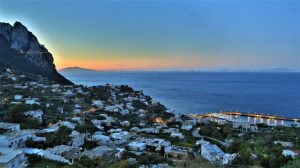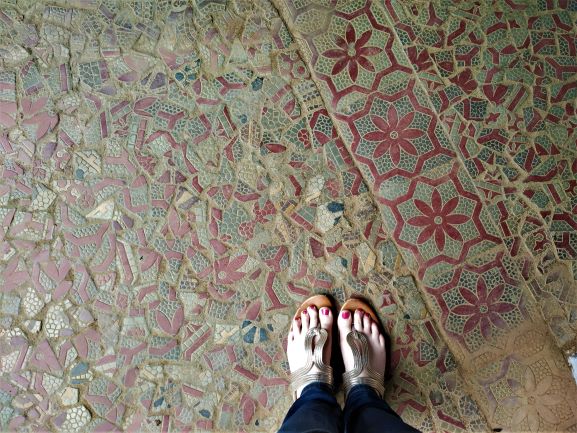Naples, the home of pizza
I’ll admit it. I didn’t think much of Naples to begin with. It, like so many other cities, is dirty and higgledy-piggeldy. Up and down hills, old narrow lanes with crumbling old buildings, and a little bit cold (it was winter and I live in India! c’mon!).
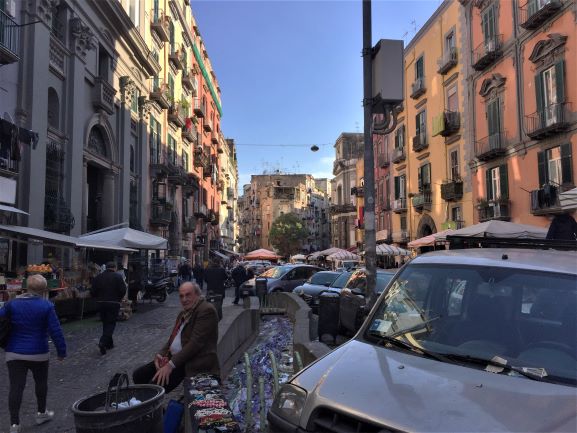
My first day there was fun but it didn’t endear me… there was no Seville-esque explosion of love. We went to go have lunch at the ‘first’ pizzeria in Naples, but the queue was mammoth.
Pizza in Italy, as you expect, is pretty much their religion and I am on board with this, pizza has caused less death and wars than standard religions. The Pizza Napoletana Association was created in 1984 to regulate production of Neapolitan pizza. So, here are some of the criteria you must meet before you are allowed to join the association and sell ‘true’ Neapolitan pizza:
-The pizza has to be ’roundish’, 30-35cm across, formed by hand only- no rolling pin!
-It must have a raised edge free from burns
-The dough must be soft and elastic (they give you a recipe to follow!)
-It must use extra virgin olive oil, mozzarella or fiordilatte DOP cheese, tomato, and basil grown locally.
-It must be cooked in a wood-fired oven, between 430-480 oC (so it takes 60-90 seconds to cook)

So, every day for lunch we had pizza. A whole pizza each (of course). We tried a variety of flavours and toppings but kept coming back to the classic Margherita. Our daily routine very quickly became a pizza for lunch and pasta for dinner, which was food heaven for us!
Margherita pizza is named after Queen Margherita of Savoy. The story goes in 1889, the Queen visited Napoli and this pizza was created to honour the unification of Italy- made in the colours of the Italian flag- Red tomatoes, green basil, and white cheese.
Naples Catacombs of San Gennaro
We stumbled across these tombs (not literally, on the internet) and decided it would be interesting to visit. They were. A large two-level series of catacombs have been unearthed and restored. They have to date counted 3000 burials but there is really no way of knowing how many people are in each hollow, and some are buried in the ground too. Complete with underground churches, the space is eerie and very interesting! It’s estimated to be about 2000 years old… that’s some incredible history.

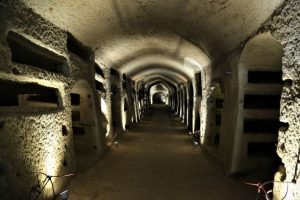

Napoli sotterranea
To complement the morning spent underground, we spent the afternoon underground too. Napoli sotterranea was built by the ancient Greeks, 35m below the city of Naples. They used the underground area as a quarry and extracted tufa stone from to create the city walls and temples about 4 B.C. The excavated areas were then used as tombs. Then the Romans came along a few hundred years later and built a large aqueduct to provide water to the city of Napoli, and built tunnels as a way of avoiding climbing hills.
In the 1900’s, the underground was abandoned as a safer water system was developed. The people of Naples then used the ventilation/ entry cavities as a place to throw all their trash. Literally, Naples is sitting on metres and metres of rubbish.
In WWII, the tunnels were re-opened and the rubbish was compacted and sealed over. People rushed underground during bombings and a community of locals lived underground completely!


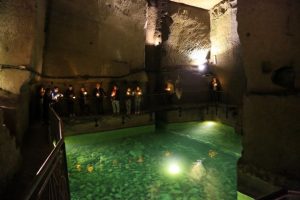


Sorrento
We stayed in a place called Piano Di Sorrento, which is a short (1 hr-ish) train trip from Naples. The circumvesuviana train winds from Napoli to Sorrento, it runs every half hour or so, and only costs a few Euros. We stayed in a gorgeous Air BnB that was set in the middle of suburban Piano di Sorrento. Sorrento and Piano di Sorrento are beautiful small towns and I would recommend staying there rather than in Naples itself. The pizza is just as good!

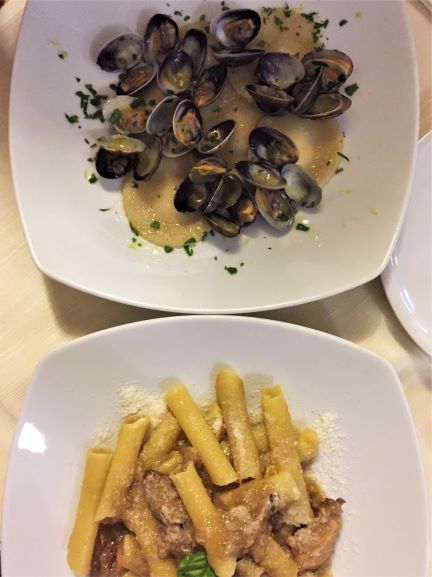
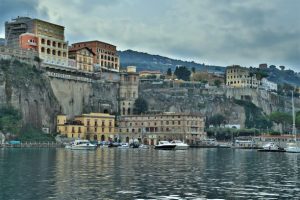

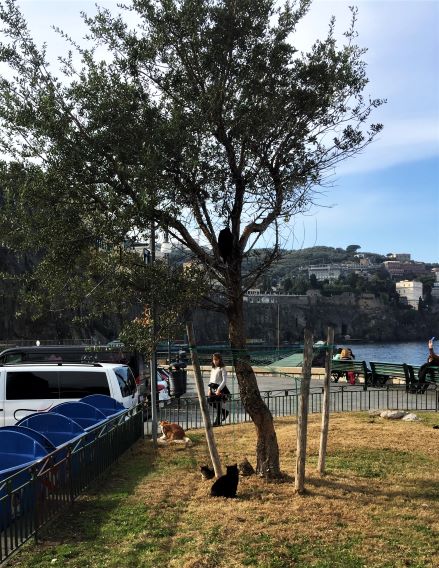
Anyway! Cats aside, the reason we were in Sorrento was that is where the ferry departs for Capri.
Capri
Capri is a small Island off the coast of Southern Italy. A tiny town, it explodes in summer as tourists flock to this picturesque town. There’s not a heck of a lot to do here, there’s a finicula that goes up the hill (I’m singing the finicula song again) and a cave we didn’t have enough time to see (so I’ve promised Capri I’ll be back but when it’s warmer…). What we did do was planned by Reza and I didn’t expect it otherwise I wouldn’t have done it!

Monte Solaro is the highest point of the Island, 589 meters above sea level. It can be accessed by 1000 steps or a chairlift. By the time I realised Reza had planned the chairlift, it was too late for me to back out. I hate heights and it was bitterly cold, I was miserable. I just kept my eyes shut and thought about pizza and cats. Reza loved it and said the views were magnificent. The best thing is when I eventually got to the top, there was about ten super friendly cats who wanted cuddles so I recovered quickly.



Then we descended the steps. This is my forte in life- walking up and down never ending hills (my family are all epic trampers/ walkers) and I enjoy walking. I wish I had walked up them too… next time. These are called the Phoenician Steps, and at one stage were the only connection between the two sides of the Island. These steps were created by the ancient Greeks in the 7th and 6th Century B.C.

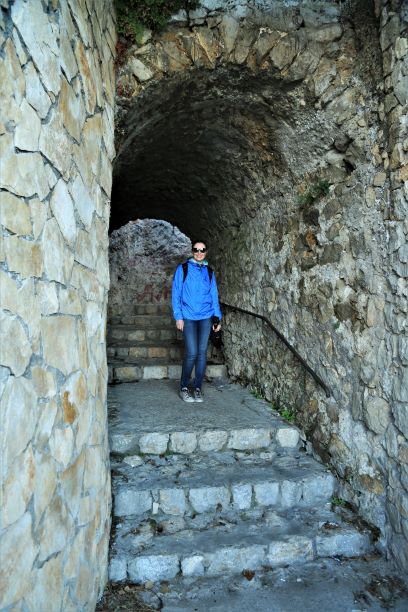

By then, the sun was setting and I was very, very cold. We found a bar, paid for the world’s most expensive hot chocolates (seriously, don’t even ask) and waited for our ferry. Headed home for dinner, and I can’t remember but I’m sure we had pasta for dinner!
